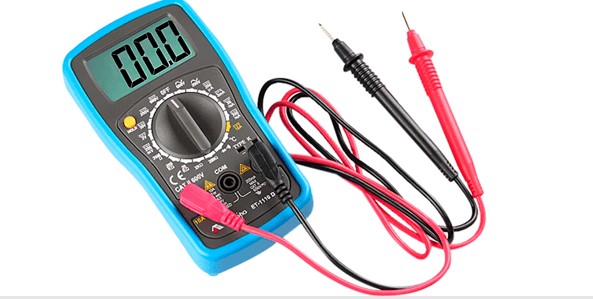AC/DC Power
Data to be collected during the stationary battery discharge test
The stationary battery discharge test is one of the most reliable methods to assess their health. Additionally, it is equivalent to measuring battery capacity.
However, its accuracy depends not only on the precision of the instruments used and the objectivity of the observer but also on its correct application.
For this last point, we invite you to read the post How to perform the discharge test of a stationary battery bank. In which you will find all the necessary guidelines.
This includes correctly recording the necessary variables. To help with this, we provide a brief orientation below. Let’s get started!
Before starting the battery discharge test
We suggest, as a first step, that you have a data sheet with all the characteristics of the battery bank to be tested. Subsequently, you should take the following measurements, cell by cell:
.- Temperature of each cell and of the electrolyte (the latter in the case of open or vented batteries). The temperature should not exceed the ambient temperature.
.- Voltage in each cell, and it is recommended to take this parameter from the battery bank as a whole. The voltage in the cells should be a minimum of 2 Vdc and a maximum of 2.1 Vdc.
Check that the battery bank to be tested has not been discharged in the last 24 hours. Also, ensure that it is fully charged. In our article How to determine the state of charge of a stationary battery. We provide instructions on how to do this.
Additionally, in the case of open batteries, check that the electrolyte is at the optimal level.
It is a good practice to include a review of the installation project of the battery bank in your preparations. It is important to find out if all necessary factors were considered.
This includes factors such as reserve capacity, temperature compensation, and aging, among others. All of these activities are part of the preventive maintenance of stationary batteries.
You can find more information on the topics mentioned in the Sizing and design of dc power systems for telecommunications and critical systems course. Which is available for you.
During the battery discharge test
Take the values mentioned earlier every 10 minutes. Pay close attention if any of these values vary abruptly in any element compared to the rest of the cells, including the measurement of the battery bank as a whole.
It’s crucial that you record the time in minutes for each of these data points. An example of a data table for this test is provided below for a battery bank with 12 elements.

Obviously, you should adapt it to the specifics of your test, especially concerning the cells where you will record measurements.
When to conclude the test
The test is concluded when one of the following situations occurs:
There is an abnormal increase in temperature

When one cell reaches the cutoff voltage, it implies that it will begin to deteriorate from that moment onwards. Therefore, you must immediately disconnect the load.
It is worth noting that it is ideal for the highest number of cells to reach this value simultaneously.
There is an abnormal increase in temperature

If the measurements show a consistent rise in temperature, you must disconnect the load as there is a risk of explosion.
If the estimated time is met

To do this, you must have a predetermined time during which the battery bank must supply current while maintaining the voltage above the cutoff value.
To prevent damage to the cells, you should end the test when this time is reached. This action preserves the integrity of the battery bank and avoids subjecting it to unnecessary stress.
After the discharge test
Remember that after the test, the battery bank has undergone a significant discharge. Therefore, we suggest adjusting the rectifiers to apply an equalization charge for about 24 hours to recharge it as quickly as possible.
This way, you ensure service in case of an AC failure. Also, make sure the emergency generator set is ready.
In our upcoming post titled Interpretation of results of the stationary battery discharge test we will continue with this topic.
You can find the methodology for this protocol in our post How to perform a stationary battery bank discharge test, It’s sure to clear up any doubts you may have!
Furthermore, we offer the Sizing and designing dc power systems for telecommunications and critical systems course.
With this course, you’ll learn how to calculate a battery bank for various applications. You can view its content here.
Lastly, before we say goodbye, we invite you to check out the diverse and interesting content we have on the energydcac blog. See you soon!
Image sources
- tiendaelektron.com
- energydcac.com
- amazon.es

